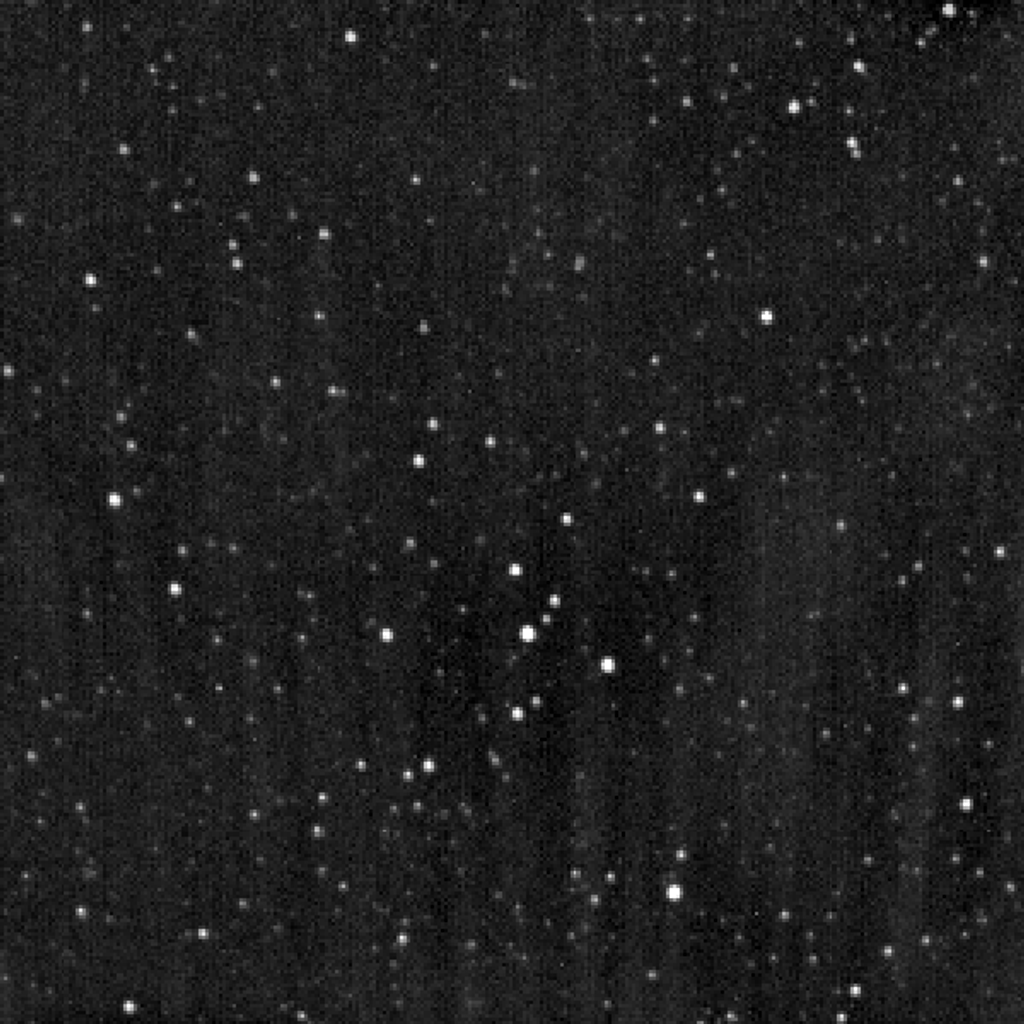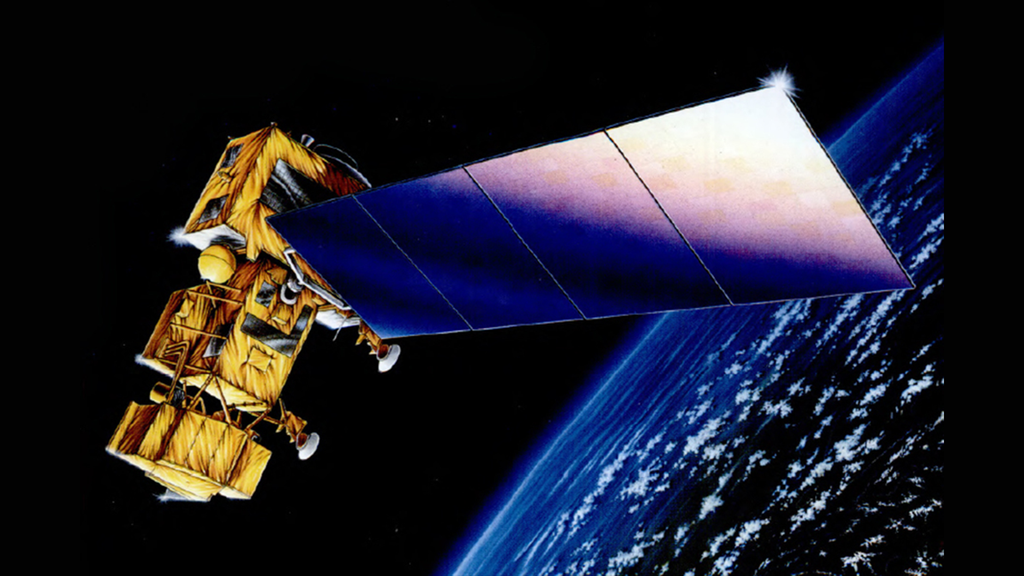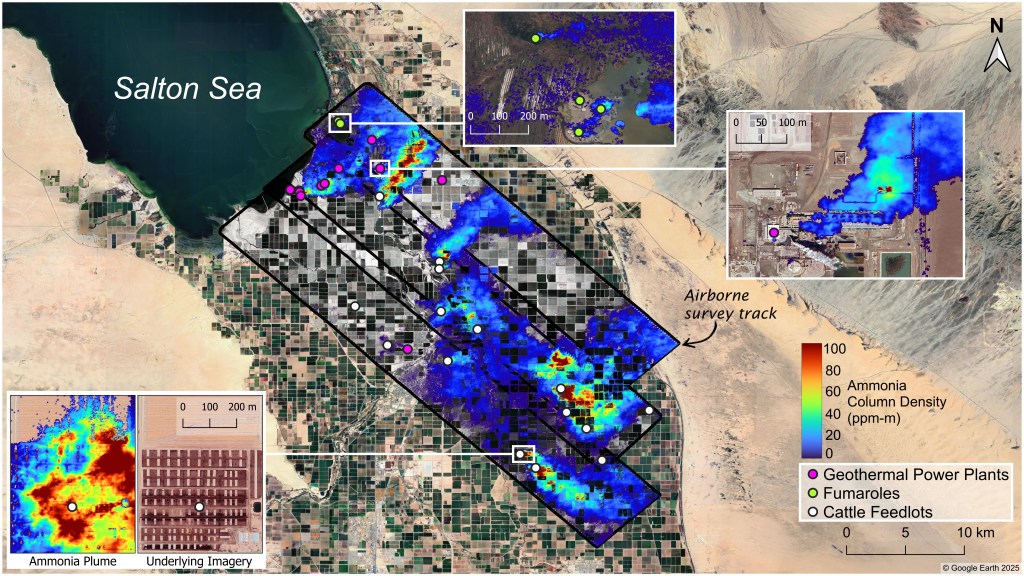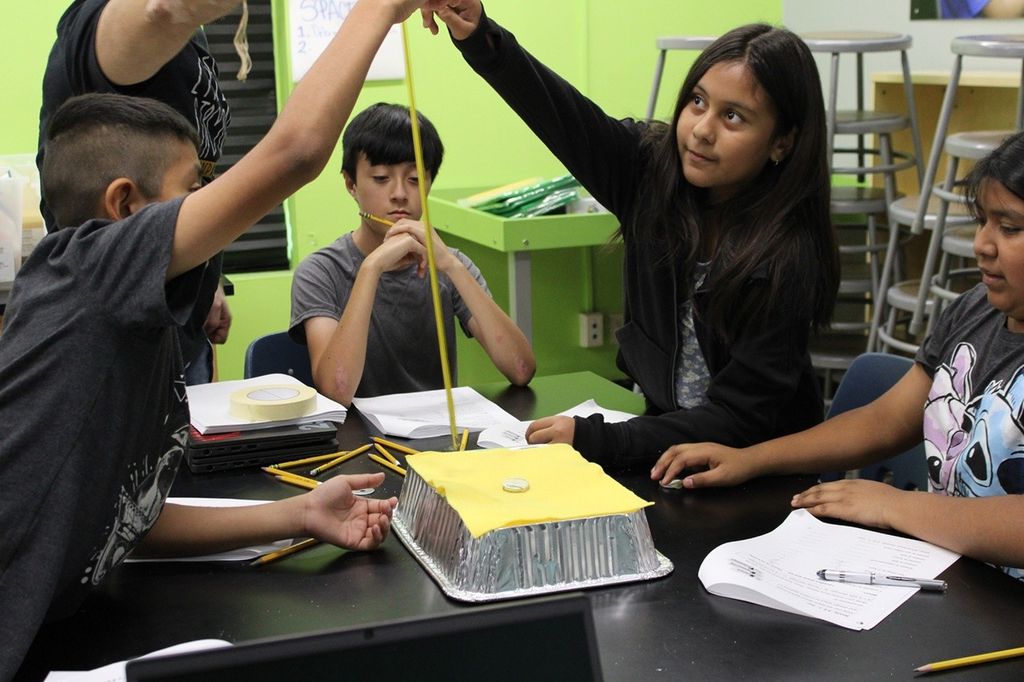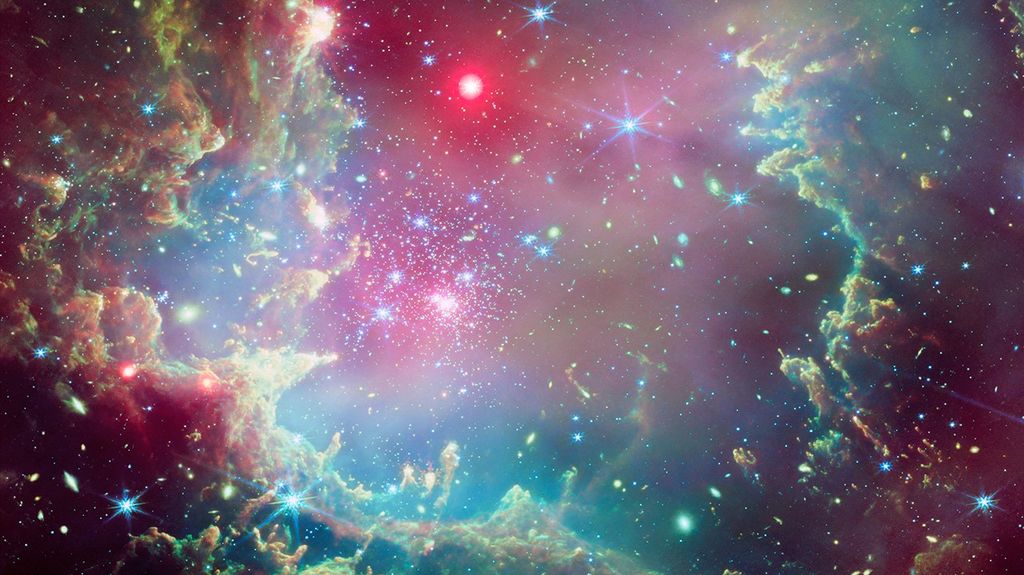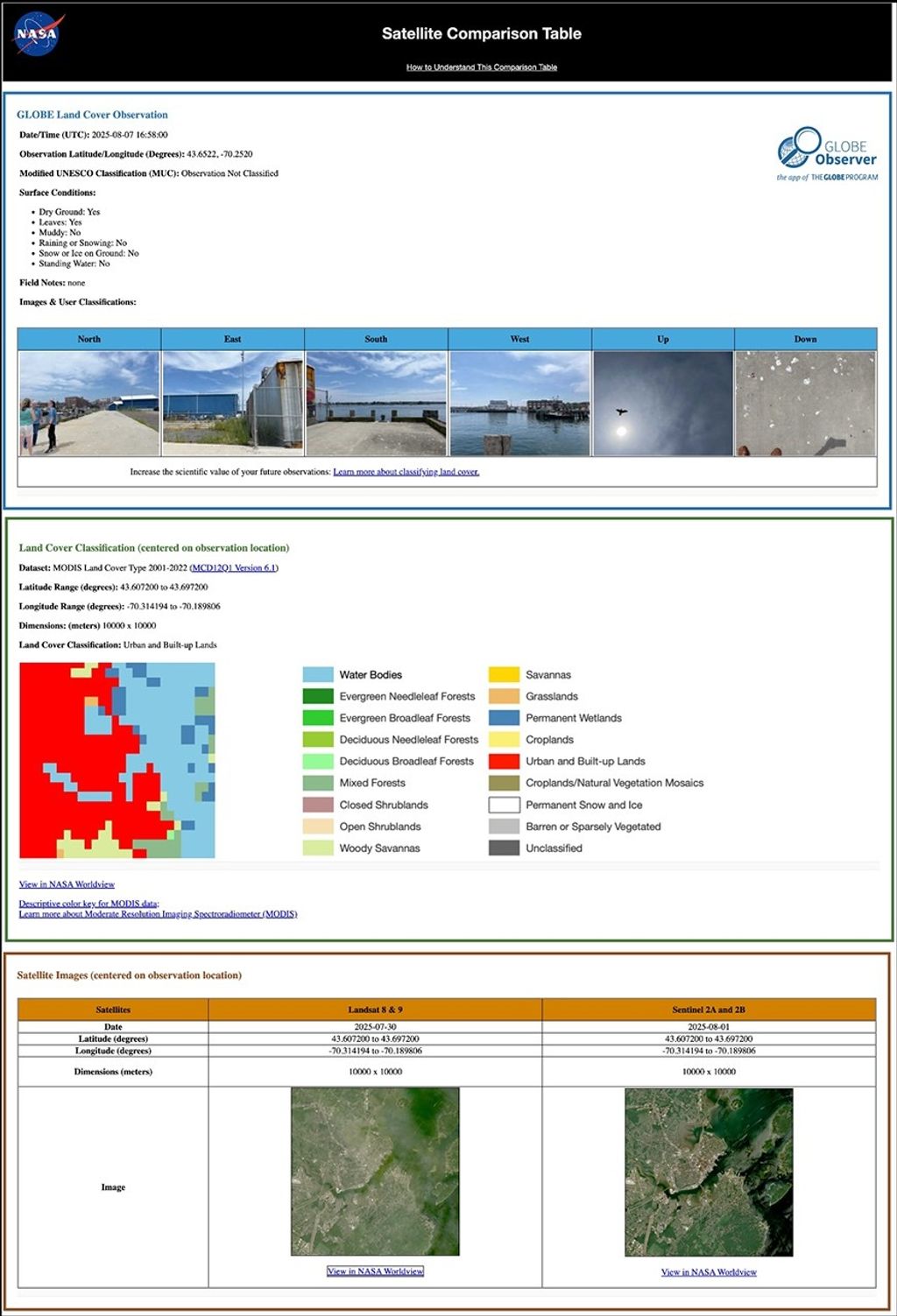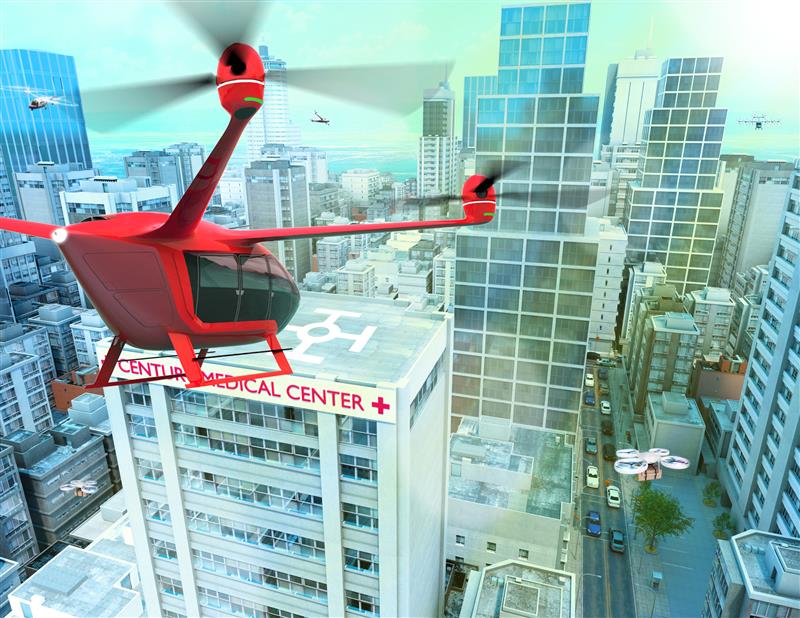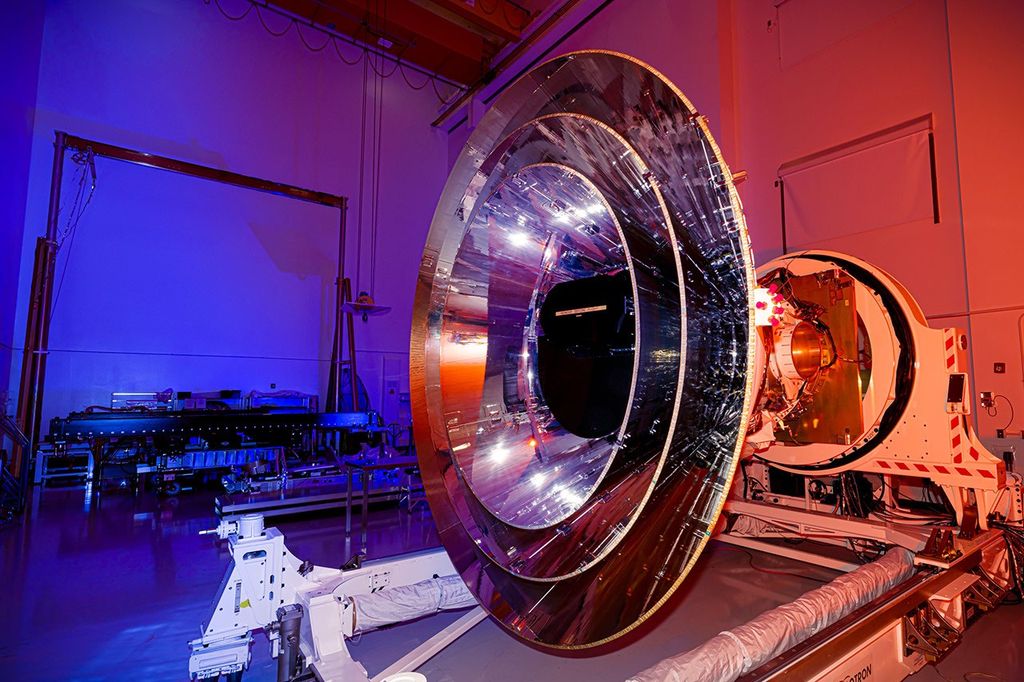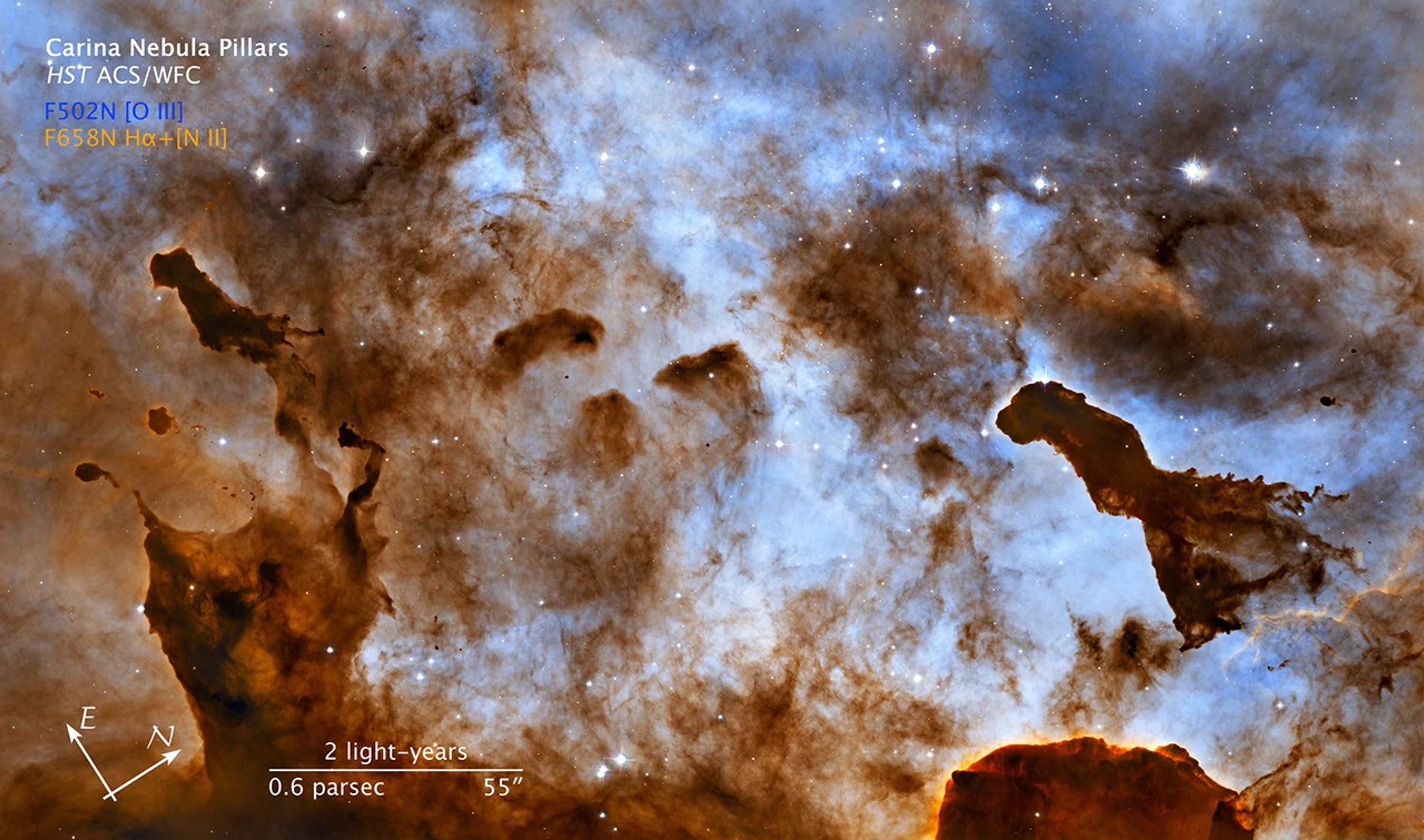1 min read
Carina Nebula Finder Image
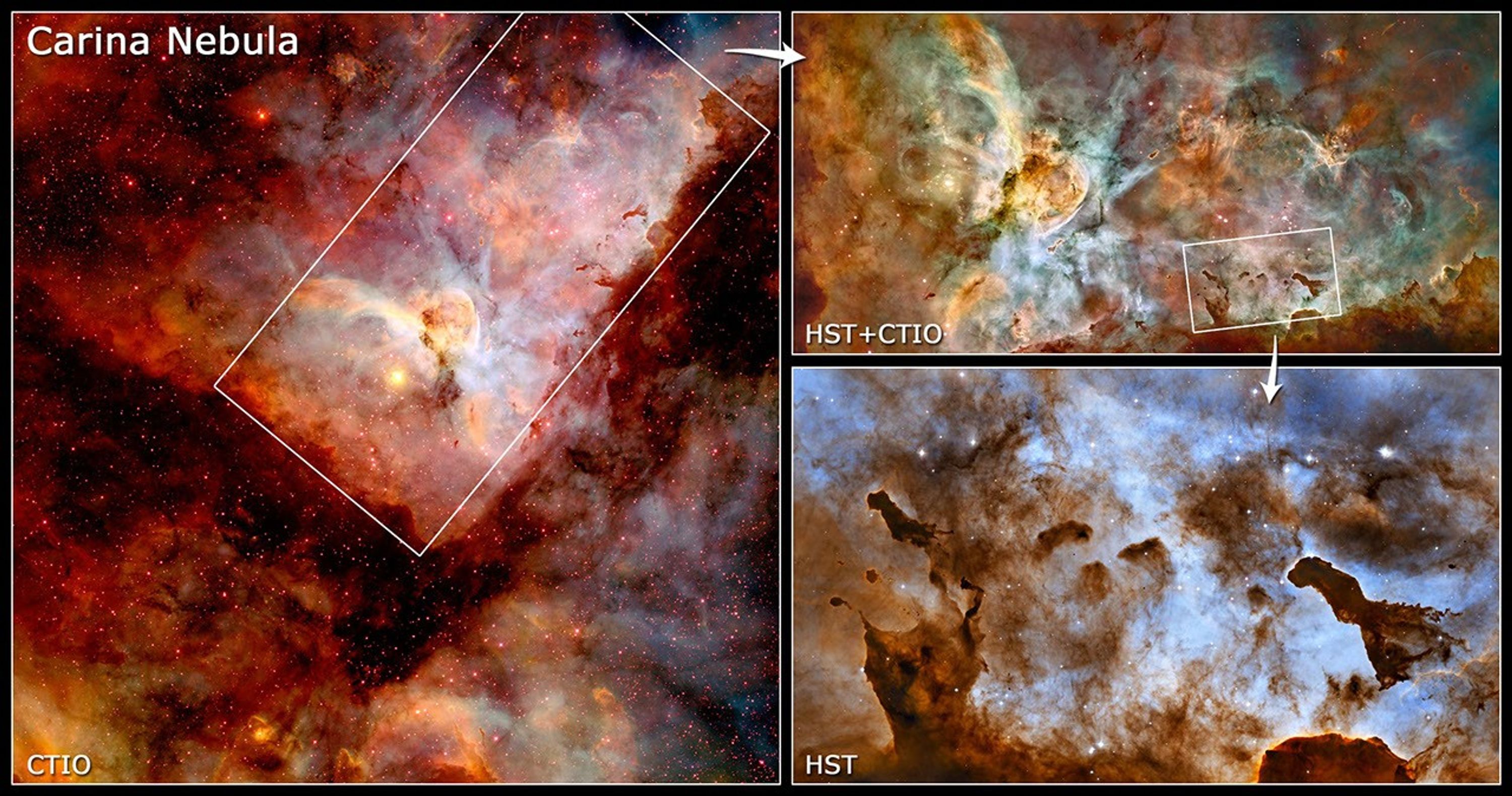
[LEFT] This is the Carina Nebula as imaged by ground-based telescopes at the Cerro Tololo Inter-american Observatory (CTIO) in La Serena, Chile. Narrow-band filters which allow emission from oxygen, hydrogen, and oxygen were used to create this multi-colored image. The white box outlines the Hubble Space Telescope/CTIO Carina Nebula mosaic, released in 2007. Image courtesy of N. Smith (University of California, Berkeley) and NOAO/AURA/NSF.
[TOP RIGHT] This is the Hubble Space Telescope/CTIO mosaic of a subsection of the Carina Nebula. CTIO emission filters were combined with Hubble Advanced Camera for Surveys (ACS) data taken with filters that isolate hydrogen emission. This higher-resolution ACS image was used as a luminosity layer and combined with the multi-filtered CTIO data. The white box outline indicates the Carina Nebula dust pillars. Image courtesy of NASA, ESA, N. Smith (University of California, Berkeley), and the Hubble Heritage Team (STScI/AURA).
[BOTTOM RIGHT] This is a photo of the Carina Nebula dust pillars imaged with Hubble's Advanced Camera for Surveys (ACS) detector using filters that allow emission from hydrogen (from 2005 data) and oxygen (2010 data). The recent oxygen observations were a "bonus" dataset that resulted when the ACS was used "in parallel" with the Wide Field Camera (WFC) as that detector imaged Herbig-Haro objects 901/902 in February 2010 for Hubble's 20th Anniversary image release. Image courtesy of NASA, ESA, the Hubble Heritage Team (STScI/AURA), N. Smith (University of California, Berkeley), and M. Livio (STScI).
About the Object
- ConstellationConstellationOne of 88 recognized regions of the celestial sphere in which the object appears.Carina
- DistanceDistanceThe physical distance from Earth to the astronomical object. Distances within our solar system are usually measured in Astronomical Units (AU). Distances between stars are usually measured in light-years. Interstellar distances can also be measured in parsecs.7,500 light-years (2,300 parsecs)
About the Data
- InstrumentInstrumentThe science instrument used to produce the data.CTIO>MOSAIC 2 (left), HST>ACS and CTIO>MOSAIC 2 (top-right), and HST>WFC3 (bottom-right)
- Exposure DatesExposure DatesThe date(s) that the telescope made its observations and the total exposure time.December 2001/March 2003 (CTIO image, left), March/July 2005 (HST>ACS, top-right), July 17, 2005, and February 1-2, 2010 (HST>WFC3, bottom-right)
- Object NameObject NameA name or catalog number that astronomers use to identify an astronomical object.Carina Nebula and Pillar in the Carina Nebula
- Object DescriptionObject DescriptionThe type of astronomical object.Carina Nebula Star-Forming Pillars
- Release DateSeptember 16, 2010
- Science ReleaseCosmic Ice Sculptures: Dust Pillars in the Carina Nebula
- CreditIllustration: NASA, ESA, and L. Frattare (STScI); Left Image: N. Smith (University of California, Berkeley) and NOAO/AURA/NSF Top-right Image: NASA, ESA, N. Smith (University of California, Berkeley), and the Hubble Heritage Team (STScI/AURA); Bottom-right Image: NASA, ESA, and the Hubble Heritage Project (STScI/AURA)
Related Images & Videos

Cosmic Ice Sculptures: Dust Pillars in the Carina Nebula
Enjoying a frozen treat on a hot summer day can leave a sticky mess as it melts in the Sun and deforms. In the cold vacuum of space, there is no edible ice cream, but there is radiation from massive stars that is carving away at cold molecular clouds, creating bizarre,...
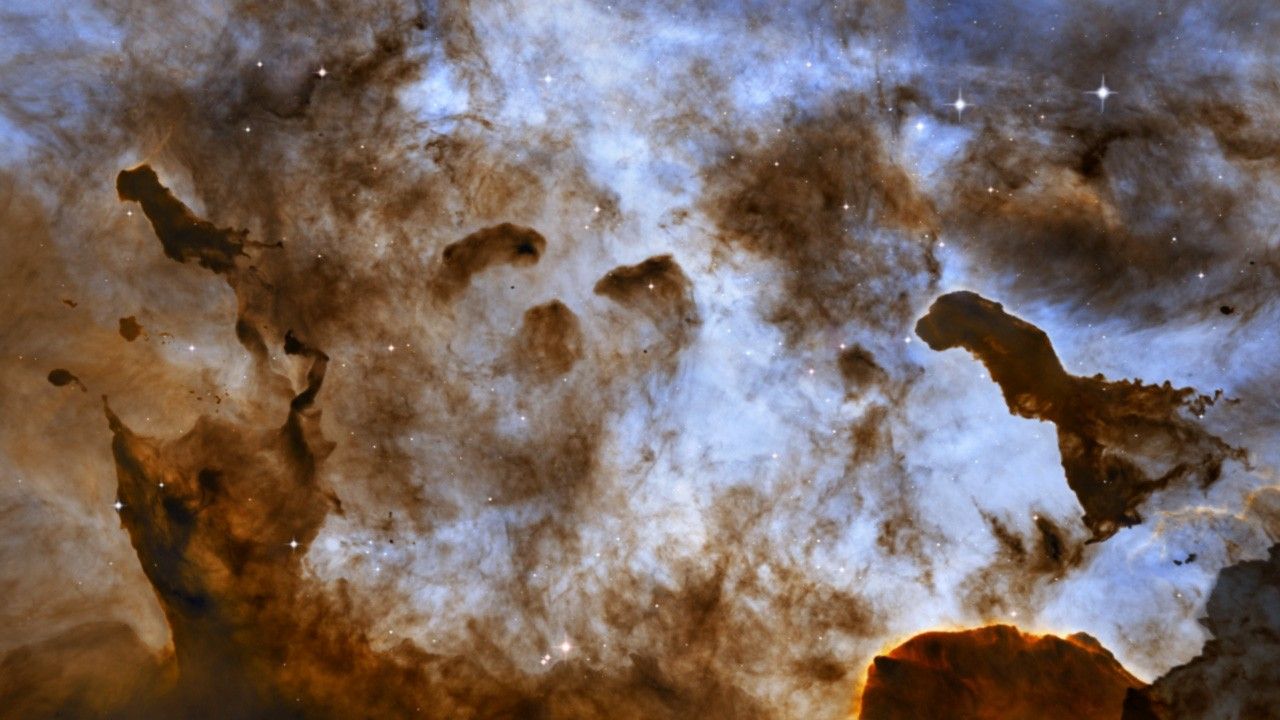
A Flight Into the Dark Pillars of Carina
This scientific visualization creates a three-dimensional virtual tour of several dark pillars of cool gas in the Carina Nebula. The stars and nebula layers from Hubble's two-dimensional image have been separated using both scientific knowledge and artistic license to create the...
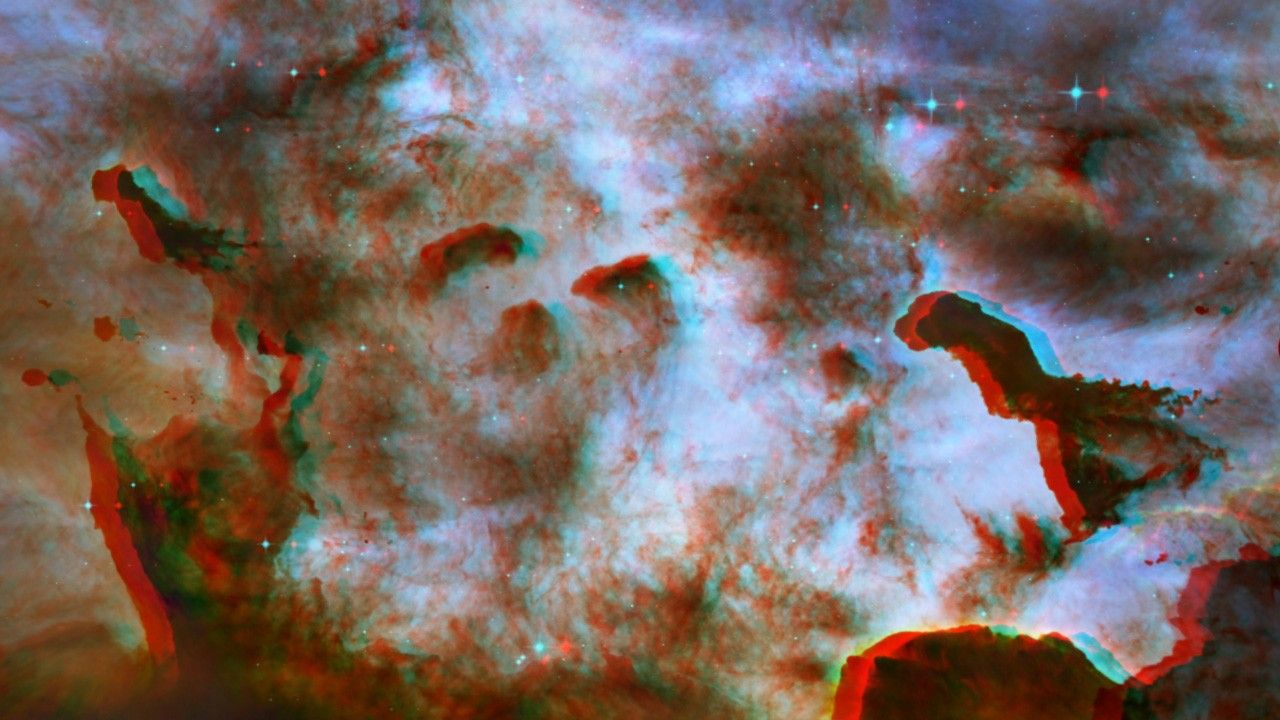
A Stereo 3-D Flight Into the Dark Pillars of Carina
This scientific visualization creates a three-dimensional virtual tour of several dark pillars of cool gas in the Carina Nebula. The stars and nebula layers from Hubble's two-dimensional image have been separated using both scientific knowledge and artistic license to create the...
Share
Details
Claire Andreoli
NASA’s Goddard Space Flight Center
Greenbelt, Maryland
claire.andreoli@nasa.gov






